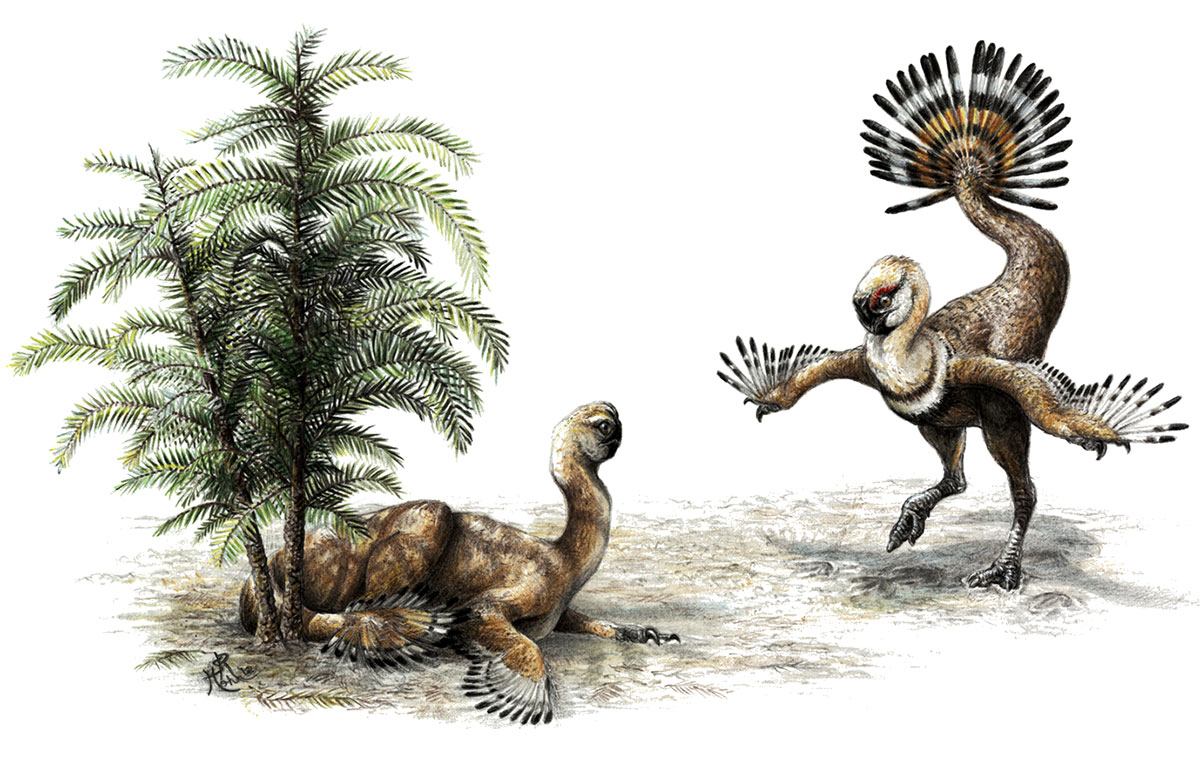 Supplied
SuppliedThe story of the dinosaurs “Romeo” and “Juliet” started 75 million years ago in what is now the Gobi Desert of Mongolia. Like Shakespeare’s tragic teenage couple, these reptilian lovers were doomed.
One day during a rainstorm, the mated pair of oviraptors, each the size of a turkey, huddled under a sand dune for shelter. Unfortunately for them, the dune collapsed, and there they remained there until their discovery by paleontologists years later. Now, their deaths are offering new insight into the mating behaviour of oviraptors.
The dinosaurs were almost identical except for one crucial part — the tail. Romeo’s tailbones were bigger, likely adapted for waving his display feathers in a mating dance. Because the two oviraptors were found together, researchers could compare them to study sexual dimorphism– the physical difference between males and females.
According to Scott Persons, a PhD candidate of Phillip J. Currie’s dinosaur lab at the University of Alberta, complete fossil specimens like Romeo and Juliet are very rare, making the study of sexual dimorphism difficult. In fact, this is the first time sexual dimorphism been observed in the tails of dinosaurs.
“(The) problems with looking for sexual dimorphism in dinosaurs are essentially you need two specimens that are the same age, the same individual, and in this case, are very nicely preserved,” Persons said. “That’s actually a pretty tall order.”
Persons had been looking for fossils like Romeo and Juliet since he and his colleagues published a study in 2011 which found that oviraptors had feathered tails. The oviraptor fossils in the study were rare. Preserved in a very fine volcanic ash, delicate details of large leaf-shaped feathers on the tips of the dinosaurs’ tails were observed.
Since oviraptors were ground-based and incapable of flight, the feathers were determined to have been used for some other function. In 2013, the researchers found that when compared to other dinosaurs, the tails of oviraptors were highly flexible and strong. This suggested the tails may have been for mating displays, similar to modern birds.
“Just as a peacock has got a bigger feather fan than does a peahen … it ought to be then, logically, that male oviraptors should have bigger tail feather fans than do females,” Persons said.
Romeo and Juliet were preserved in sand, which isn’t as good for preserving feathers, so the team had to closely inspect their bones. Bigger tailbones indicated an oviraptor was male because they would have more area for muscle attachment, which could support a set of large, flashy display feathers. Smaller tailbones indicated an oviraptor was female, since she was probably busy choosing mates from the peacocking males.
Because it couldn’t have been used for flight, Romeo’s feather fan also contributes to paleontologists’ understanding of feather evolution.
“For a long time it was just assumed, because feathers of modern day birds are highly sophisticated … that (flight) was what feathers were originally supposed to do,” Persons said.
This study of Romeo and Juliet suggests that feathers may have originally evolved for other functions, such as mating displays.
“It’s a rare case where we’ve been able to identify sexual dimorphism,” Persons said. “We’ve been able to, in many ways support our proposed theory that oviraptors were using their tails for display.
“So in regards to that theory, that really suggests that yes, we do have a good understanding in that regard of what oviraptor behaviour was like.”




